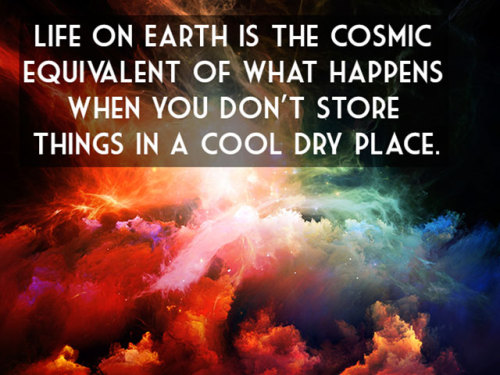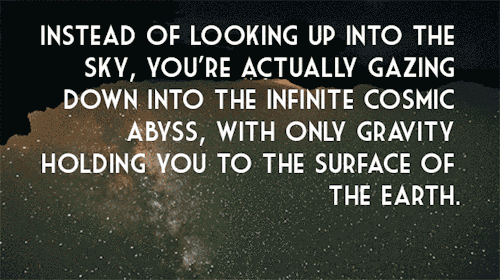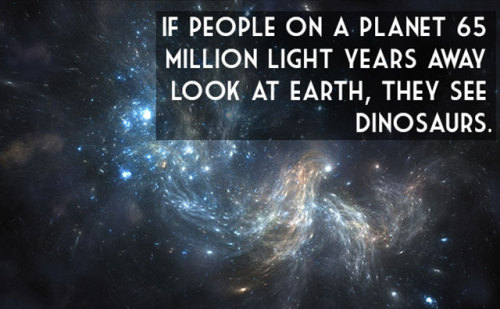SpaceX Sends Super Science To Space Station!
SpaceX Sends Super Science to Space Station!
SpaceX is scheduled to launch its Dragon spacecraft PACKED with super cool research and technology to the International Space Station June 1 from Kennedy Space Center in Florida. New solar panels, investigations that study neutron stars and even fruit flies are on the cargo list. Let’s take a look at what other bits of science are making their way to the orbiting laboratory 250 miles above the Earth…

New solar panels to test concept for more efficient power source
Solar panels generate power well, but they can be delicate and large when used to power a spacecraft or satellites. This technology demonstration is a solar panel concept that is lighter and stores more compactly for launch than the solar panels currently in use.

Roll-Out Solar Array (ROSA) has solar cells on a flexible blanket and a framework that rolls out like a tape measure and snap into place, and could be used to power future space vehicles.
Investigation to Study Composition of Neutron Stars
Neutron stars, the glowing cinders left behind when massive stars explode as supernovas, contain exotic states of matter that are impossible to replicate in any lab. NICER studies the makeup of these stars, and could provide new insight into their nature and super weird behavior.

Neutron stars emit X-ray radiation, enabling the NICER technology to observe and record information about its structure, dynamics and energetics.
Experiment to Study Effect of New Drug on Bone Loss
When people and animals spend lots of space, they experience bone density loss. In-flight exercise can prevent it from getting worse, but there isn’t a therapy on Earth or in space that can restore bone that is already lost.

The Systemic Therapy of NELL-1 for osteoporosis (Rodent Research-5) investigation tests a new drug that can both rebuild bone and block further bone loss, improving health for crew members.
Research to Understand Cardiovascular Changes
Exposure to reduced gravity environments can result in cardiovascular changes such as fluid shifts, changes in total blood volume, heartbeat and heart rhythm irregularities, and diminished aerobic capacity.

The Fruit Fly Lab-02 study will use the fruit fly (Drosophila melanogaster) to better understand the underlying mechanisms responsible for the adverse effects of prolonged exposure to microgravity on the heart. Fruit flies are effective model organisms, and we don’t mean on the fashion runway. Want to see how 1,000 bottles of fruit flies were prepared to go to space? Check THIS out.
Space Life-Support Investigation
Currently, the life-support systems aboard the space station require special equipment to separate liquids and gases. This technology utilizes rotating and moving parts that, if broken or otherwise compromised, could cause contamination aboard the station.

The Capillary Structures investigation studies a new method of water recycling and carbon dioxide removal using structures designed in specific shapes to manage fluid and gas mixtures.
Earth-Observation Tools
Orbiting approximately 250 miles above the Earth’s surface, the space station provides pretty amazing views of the Earth. The Multiple User System for Earth Sensing (MUSES) facility hosts Earth-viewing instruments such as high-resolution digital cameras, hyperspectral imagers, and provides precision pointing and other accommodations.

This investigation can produce data that could be used for maritime domain awareness, agricultural awareness, food security, disaster response, air quality, oil and gas exploration and fire detection.
Watch the launch live HERE! For all things space station science, follow @ISS_Research on Twitter.
Make sure to follow us on Tumblr for your regular dose of space: http://nasa.tumblr.com
More Posts from Maevetheeuropan and Others
Getting to Mars: What It’ll Take
Join us as we take a closer look at the next steps in our journey to the Red Planet:
The journey to Mars crosses three thresholds, each with increasing challenges as humans move farther from Earth. We’re managing these challenges by developing and demonstrating capabilities in incremental steps:
Earth Reliant

Earth Reliant exploration is focused on research aboard the International Space Station. From this world-class microgravity laboratory, we are testing technologies and advancing human health and performance research that will enable deep space, long duration missions.
On the space station, we are advancing human health and behavioral research for Mars-class missions. We are pushing the state-of-the-art life support systems, printing 3-D parts and analyzing material handling techniques.
Proving Ground

In the Proving Ground, we will learn to conduct complex operations in a deep space environment that allows crews to return to Earth in a matter of days. Primarily operating in cislunar space (the volume of space around the moon). We will advance and validate the capabilities required for humans to live and work at distances much farther away from our home planet…such as at Mars.
Earth Independent

Earth Independent activities build on what we learn on the space station and in deep space to enable human missions to the Mars vicinity, possibly to low-Mars orbit or one of the Martian moons, and eventually the Martian surface. Future Mars missions will represent a collaborative effort between us and our partners.

Did you know….that through our robotic missions, we have already been on and around Mars for 40 years! Taking nearly every opportunity to send orbiters, landers and rovers with increasingly complex experiments and sensing systems. These orbiters and rovers have returned vital data about the Martian environment, helping us understand what challenges we may face and resources we may encounter.

Through the Asteroid Redirect Mission (ARM), we will demonstrate an advanced solar electric propulsion capability that will be a critical component of our journey to Mars. ARM will also provide an unprecedented opportunity for us to validate new spacewalk and sample handling techniques as astronauts investigate several tons of an asteroid boulder.
Living and working in space require accepting risks – and the journey to Mars is worth the risks. A new and powerful space transportation system is key to the journey, but we will also need to learn new ways of operating in space.
We Need You!

In the future, Mars will need all kinds of explorers, farmers, surveyors, teachers…but most of all YOU! As we overcome the challenges associated with traveling to deep space, we will still need the next generation of explorers to join us on this journey. Come with us on the journey to Mars as we explore with robots and send humans there one day.
Join us as we go behind-the-scenes:
We’re offering a behind-the-scenes look Thursday, Aug. 18 at our journey to Mars. Join us for the following events:
Journey to Mars Televised Event at 9:30 a.m. EDT Join in as we host a conversation about the numerous efforts enabling exploration of the Red Planet. Use #askNASA to ask your questions! Tune in HERE.
Facebook Live at 1:30 p.m. EDT Join in as we showcase the work and exhibits at our Michoud Assembly Facility. Participate HERE.
Hot Fire Test of an RS-25 Engine at 6 p.m. EDT The 7.5-minute test is part of a series of tests designed to put the upgraded former space shuttle engines through the rigorous temperature and pressure conditions they will experience during a launch. Watch HERE.
Make sure to follow us on Tumblr for your regular dose of space: http://nasa.tumblr.com

NASA scientists have reported that they’ve successfully tested an engine called the electromagnetic propulsion drive, or the EM Drive, in a vacuum that replicates space. The EM Drive experimental system could take humans to Mars in just 70 days without the need for rocket fuel, and it’s no exaggeration to say that this could change everything.
But before we get too excited (who are we kidding, we’re already freaking out), it’s important to note that these results haven’t been replicated or verified by peer review, so there’s a chance there’s been some kind of error. But so far, despite a thorough attempt to poke holes in the results, the engine seems to hold up.
Continue Reading.
Solar System: Things to Know This Week
Reaching out into space yields benefits on Earth. Many of these have practical applications — but there’s something more than that. Call it inspiration, perhaps, what photographer Ansel Adams referred to as nature’s “endless prospect of magic and wonder."
Our ongoing exploration of the solar system has yielded more than a few magical images. Why not keep some of them close by to inspire your own explorations? This week, we offer 10 planetary photos suitable for wallpapers on your desktop or phone. Find many more in our galleries. These images were the result of audacious expeditions into deep space; as author Edward Abbey said, "May your trails be crooked, winding, lonesome, dangerous, leading to the most amazing view.”

1. Martian Selfie
This self-portrait of NASA’s Curiosity Mars rover shows the robotic geologist in the “Murray Buttes” area on lower Mount Sharp. Key features on the skyline of this panorama are the dark mesa called “M12” to the left of the rover’s mast and pale, upper Mount Sharp to the right of the mast. The top of M12 stands about 23 feet (7 meters) above the base of the sloping piles of rocks just behind Curiosity. The scene combines approximately 60 images taken by the Mars Hand Lens Imager, or MAHLI, camera at the end of the rover’s robotic arm. Most of the component images were taken on September 17, 2016.
800 x 600
1024 x 768
1280 x 1024
1600 x 1200
1280 x 800
1440 x 900
1920 x 1200

2. The Colors of Pluto
NASA’s New Horizons spacecraft captured this high-resolution, enhanced color view of Pluto on July 14, 2015. The image combines blue, red and infrared images taken by the Ralph/Multispectral Visual Imaging Camera (MVIC). Pluto’s surface sports a remarkable range of subtle colors, enhanced in this view to a rainbow of pale blues, yellows, oranges, and deep reds. Many landforms have their own distinct colors, telling a complex geological and climatological story that scientists have only just begun to decode.
800 x 600
1024 x 768
1280 x 1024
1600 x 1200
1280 x 800
1440 x 900
1920 x 1200

3. The Day the Earth Smiled
On July 19, 2013, in an event celebrated the world over, our Cassini spacecraft slipped into Saturn’s shadow and turned to image the planet, seven of its moons, its inner rings — and, in the background, our home planet, Earth. This mosaic is special as it marks the third time our home planet was imaged from the outer solar system; the second time it was imaged by Cassini from Saturn’s orbit, the first time ever that inhabitants of Earth were made aware in advance that their photo would be taken from such a great distance.
800 x 600
1024 x 768
1280 x 1024
1600 x 1200
1280 x 800
1440 x 900
1920 x 1200

4. Looking Back
Before leaving the Pluto system forever, New Horizons turned back to see Pluto backlit by the sun. The small world’s haze layer shows its blue color in this picture. The high-altitude haze is thought to be similar in nature to that seen at Saturn’s moon Titan. The source of both hazes likely involves sunlight-initiated chemical reactions of nitrogen and methane, leading to relatively small, soot-like particles called tholins. This image was generated by combining information from blue, red and near-infrared images to closely replicate the color a human eye would perceive.
800 x 600
1024 x 768
1280 x 1024
1600 x 1200
1280 x 800
1440 x 900
1920 x 1200

5. Catching Its Own Tail
A huge storm churning through the atmosphere in Saturn’s northern hemisphere overtakes itself as it encircles the planet in this true-color view from Cassini. This picture, captured on February 25, 2011, was taken about 12 weeks after the storm began, and the clouds by this time had formed a tail that wrapped around the planet. The storm is a prodigious source of radio noise, which comes from lightning deep within the planet’s atmosphere.
800 x 600
1024 x 768
1280 x 1024
1600 x 1200
1280 x 800
1440 x 900
1920 x 1200

6. The Great Red Spot
Another massive storm, this time on Jupiter, as seen in this dramatic close-up by Voyager 1 in 1979. The Great Red Spot is much larger than the entire Earth.
800 x 600
1024 x 768
1280 x 1024
1600 x 1200
1280 x 800
1440 x 900
1920 x 1200

7. More Stormy Weather
Jupiter is still just as stormy today, as seen in this recent view from NASA’s Juno spacecraft, when it soared directly over Jupiter’s south pole on February 2, 2017, from an altitude of about 62,800 miles (101,000 kilometers) above the cloud tops. From this unique vantage point we see the terminator (where day meets night) cutting across the Jovian south polar region’s restless, marbled atmosphere with the south pole itself approximately in the center of that border. This image was processed by citizen scientist John Landino. This enhanced color version highlights the bright high clouds and numerous meandering oval storms.
800 x 600
1024 x 768
1280 x 1024
1600 x 1200
1280 x 800
1440 x 900
1920 x 1200

8. X-Ray Vision
X-rays stream off the sun in this image showing observations from by our Nuclear Spectroscopic Telescope Array, or NuSTAR, overlaid on a picture taken by our Solar Dynamics Observatory (SDO). The NuSTAR data, seen in green and blue, reveal solar high-energy emission. The high-energy X-rays come from gas heated to above 3 million degrees. The red channel represents ultraviolet light captured by SDO, and shows the presence of lower-temperature material in the solar atmosphere at 1 million degrees.
800 x 600
1024 x 768
1280 x 1024
1600 x 1200
1280 x 800
1440 x 900
1920 x 1200

9. One Space Robot Photographs Another
This image from NASA’s Mars Reconnaissance Orbiter shows Victoria crater, near the equator of Mars. The crater is approximately half a mile (800 meters) in diameter. It has a distinctive scalloped shape to its rim, caused by erosion and downhill movement of crater wall material. Since January 2004, the Mars Exploration Rover Opportunity has been operating in the region where Victoria crater is found. Five days before this image was taken in October 2006, Opportunity arrived at the rim of the crater after a drive of more than over 5 miles (9 kilometers). The rover can be seen in this image, as a dot at roughly the “ten o'clock” position along the rim of the crater. (You can zoom in on the full-resolution version here.)
800 x 600
1024 x 768
1280 x 1024
1600 x 1200
1280 x 800
1440 x 900
1920 x 1200

10. Night Lights
Last, but far from least, is this remarkable new view of our home planet. Last week, we released new global maps of Earth at night, providing the clearest yet composite view of the patterns of human settlement across our planet. This composite image, one of three new full-hemisphere views, provides a view of the Americas at night from the NASA-NOAA Suomi-NPP satellite. The clouds and sun glint — added here for aesthetic effect — are derived from MODIS instrument land surface and cloud cover products.
Full Earth at night map
Americas at night
Discover more lists of 10 things to know about our solar system HERE.
Make sure to follow us on Tumblr for your regular dose of space: http://nasa.tumblr.com
People can’t anticipate how much they’ll miss the natural world until they are deprived of it. I have read about submarine crewmen who haunt the sonar room, listening to whale songs and colonies of snapping shrimp. Submarine captains dispense “periscope liberty” - a chance to gaze at clouds and birds and coastlines - and remind themselves that the natural world still exists. I once met a man who told me that after landing in Christchurch, New Zealand, after a winter at the South Pole research station, he and his companions spent a couple of days just wandering around staring in awe at flowers and trees. At one point, one of them spotted a woman pushing a stroller. “A baby!” he shouted, and they all rushed across the street to see. The woman turned the stroller and ran. Nothing tops space as a barren, unnatural environment. Astronauts who had no prior interest in gardening spend hours tending experimental greenhouses. “They are our love,” said cosmonaut Vladislav Volkov of the tiny flax plants - with which they shared the confines of Salyut 1, the first Soviet space station. At least in orbit, you can look out the window and see the natural world below. On a Mars mission, once astronauts lose sight of Earth, they’ll be nothing to see outside the window. “You’ll be bathed in permanent sunlight, so you won’t even see any stars,” astronaut Andy Thomas explained to me. “All you’ll see is black.”
Mary Roach. Packing for Mars: The Curious Science of Life in the Void.
This is a really interesting read - it’s got a lot of information that I would never have thought to think of (such as - will astronauts eyeballs become different shapes without gravity - weird), but it also has really good chapters about the psychology of space.
(via psycholar)
this is wonderful - and def something I've thought about!

Mars used to be much more Earth-like than we once thought. The Curiosity rover recently discovered high levels of manganese oxide, which can only exist in oxygen-rich environments. This means Mars used to have as much oxygen as Earth and plenty of water on its surface. Source Source 2
this website pisses me off, everyones always like “space is so cool!” not its not, space is bullshit and i hate everything about it, i genuinely just saw the phrase “a black hole with a mass two billion times the mass of the sun” im so pissed off, shut the fuck up, dont patronise me scientists you know i dont know what the fuck that means, my sad little brain cant comprehend the mass of one sun let alone two fucking billion, i cant even count past 10 without getting confused and youre out here talking about the mass of two billion fucking suns, shut the hell up. and dont even get me started about black holes or the expansion of the universe because thats another two seperate rants entierly. oh and apparently theres a planet made of ice except the ice is also on fire??? yeah sure fucking thing, scientists. and this is just the shit i know about. i purposely dont research space because it pisses me off so much, god knows what other fucking bullshit exists out there that ive yet to read a fucking wikipedia article about. i dont think space is real, literally everything about space is so fucking fake, this is just some elaborate fucking practicle joke. two billion times the mass of the sun, fuck you


POTENTIAL HABITATS FOR EARLY LIFE ON MARS
Recently discovered evidence of carbonates beneath the surface of Mars points to a warmer and wetter environment in that planet’s past. The presence of liquid water could have fostered the emergence of life.
A new study by James Wray at the Georgia Institute of Technology and Janice Bishop of the SETI Institute, as well as other collaborators, has found evidence for widespread buried deposits of iron- and calcium-rich Martian carbonates, which suggests a wetter past for the Red Planet.
“Identification of these ancient carbonates and clays on Mars represents a window into history when the climate on Mars was very different from the cold and dry desert of today,” notes Bishop.
The fate of water on Mars has been energetically debated by scientists because the planet is currently dry and cold, in contrast to the widespread fluvial features that etch much of its surface. Scientists believe that if water did once flow on the surface of Mars, the planet’s bedrock should be full of carbonates and clays, which would be evidence that Mars once hosted habitable environments with liquid water. Researchers have struggled to find physical evidence for carbonate-rich bedrock, which may have formed when carbon dioxide in the planet’s early atmosphere was trapped in ancient surface waters. They have focused their search on Mars’ Huygens basin.
This feature is an ideal site to investigate carbonates because multiple impact craters and troughs have exposed ancient, subsurface materials where carbonates can be detected across a broad region. And according to study led James Wray, “outcrops in the 450-km wide Huygens basin contain both clay minerals and iron- or calcium-rich carbonate-bearing rocks.”
The study has highlighted evidence of carbonate-bearing rocks in multiple sites across Mars, including Lucaya crater, where carbonates and clays 3.8 billion years old were buried by as much as 5 km of lava and caprock.
The researchers, supported by the SETI Institute’s NASA Astrobiology Institute (NAI) team, identified carbonates on the planet using data from the Compact Reconnaissance Imaging Spectrometer for Mars (CRISM), which is on the Mars Reconnaissance Orbiter. This instrument collects the spectral fingerprints of carbonates and other minerals through vibrational transitions of the molecules in their crystal structure that produce infrared emission. The team paired CRISM data with images from the High Resolution Imaging Science Experiment (HiRISE) and Context Camera (CTX) on the orbiter, as well as the Mars Orbiter Laser Altimeter (MOLA) on the Mars Global Surveyor, to gain insights into the geologic features associated with carbonate-bearing rocks.
The extent of the global distribution of martian carbonates is not yet fully resolved and the early climate on the Red Planet is still subject of debate. However, this study is a forward step in understanding the potential habitability of ancient Mars.
Preview of paper: http://onlinelibrary.wiley.com/doi/10.1002/2015JE004972/abstract
TOP IMAGE….Ancient layered clay-bearing bedrock (top left) and carbonate bedrock (bottom right) are exposed in the central uplift of an unnamed crater approximately 42 kilometers in diameter in eastern Hesperia Planum, Mars. The image was taken by the High Resolution Imaging Science Experiment (HiRISE) instrument aboard the Mars Reconnaissance Orbiter. Credit: NASA/JPL/University of Arizona
LOWER IMAGE….Aeolian bed forms overlie ancient layered, ridged carbonate-rich outcrop exposed in the central pit of Lucaya crater, northwest Huygens basin, Mars. The image was taken by the High Resolution Imaging Science Experiment (HiRISE) instrument aboard the Mars Reconnaissance Orbiter. Credit: NASA/JPL/University of Arizona
Getting to Mars: 4 Things We’re Doing Now
We’re working hard to send humans to Mars in the 2030s. Here are just a few of the things we’re doing now that are helping us prepare for the journey:
1. Research on the International Space Station

The International Space Station is the only microgravity platform for the long-term testing of new life support and crew health systems, advanced habitat modules and other technologies needed to decrease reliance on Earth.

When future explorers travel to the Red Planet, they will need to be able to grow plants for food, atmosphere recycling and physiological benefits. The Veggie experiment on space station is validating this technology right now! Astronauts have grown lettuce and Zinnia flowers in space so far.

The space station is also a perfect place to study the impacts of microgravity on the human body. One of the biggest hurdles of getting to Mars in ensuring that humans are “go” for a long-duration mission. Making sure that crew members will maintain their health and full capabilities for the duration of a Mars mission and after their return to Earth is extremely important.

Scientists have solid data about how bodies respond to living in microgravity for six months, but significant data beyond that timeframe had not been collected…until now! Former astronaut Scott Kelly recently completed his Year in Space mission, where he spent a year aboard the space station to learn the impacts of microgravity on the human body.
A mission to Mars will likely last about three years, about half the time coming and going to Mars and about half the time on the Red Planet. We need to understand how human systems like vision and bone health are affected and what countermeasures can be taken to reduce or mitigate risks to crew members.
2. Utilizing Rovers & Tech to Gather Data

Through our robotic missions, we have already been on and around Mars for 40 years! Before we send humans to the Red Planet, it’s important that we have a thorough understanding of the Martian environment. Our landers and rovers are paving the way for human exploration. For example, the Mars Reconnaissance Orbiter has helped us map the surface of Mars, which will be critical in selecting a future human landing site on the planet.

Our Mars 2020 rover will look for signs of past life, collect samples for possible future return to Earth and demonstrate technology for future human exploration of the Red Planet. These include testing a method for producing oxygen from the Martian atmosphere, identifying other resources (such as subsurface water), improving landing techniques and characterizing weather, dust and other potential environmental conditions that could affect future astronauts living and working on Mars.

We’re also developing a first-ever robotic mission to visit a large near-Earth asteroid, collect a multi-ton boulder from its surface and redirect it into a stable orbit around the moon. Once it’s there, astronauts will explore it and return with samples in the 2020s. This Asteroid Redirect Mission (ARM) is part of our plan to advance new technologies and spaceflight experience needed for a human mission to the Martian system in the 2030s.
3. Building the Ride
Okay, so we’ve talked about how we’re preparing for a journey to Mars…but what about the ride? Our Space Launch System, or SLS, is an advanced launch vehicle that will help us explore beyond Earth’s orbit into deep space. SLS will be the world’s most powerful rocket and will launch astronauts in our Orion spacecraft on missions to an asteroid and eventually to Mars.

In the rocket’s initial configuration it will be able to take 154,000 pounds of payload to space, which is equivalent to 12 fully grown elephants! It will be taller than the Statue of Liberty and it’s liftoff weight will be comparable to 8 fully-loaded 747 jets. At liftoff, it will have 8.8 million pounds of thrust, which is more than 31 times the total thrust of a 747 jet. One more fun fact for you…it will produce horsepower equivalent to 160,000 Corvette engines!

Sitting atop the SLS rocket will be our Orion spacecraft. Orion will be the safest most advanced spacecraft ever built, and will be flexible and capable enough to carry humans to a variety of destinations. Orion will serve as the exploration vehicle that will carry the crew to space, provide emergency abort capability, sustain the crew during space travel and provide safe re-entry from deep space return velocities.
4. Making it Sustainable
When humans get to Mars, where will they live? Where will they work? These are questions we’ve already thought about and are working toward solving. Six partners were recently selected to develop ground prototypes and/or conduct concept studies for deep space habitats.

These NextSTEP habitats will focus on creating prototypes of deep space habitats where humans can live and work independently for months or years at a time, without cargo supply deliveries from Earth.

Another way that we are studying habitats for space is on the space station. In June, the first human-rated expandable module deployed in space was used. The Bigelow Expandable Activity Module (BEAM) is a technology demonstration to investigate the potential challenges and benefits of expandable habitats for deep space exploration and commercial low-Earth orbit applications.
Our journey to Mars requires preparation and research in many areas. The powerful new Space Launch System rocket and the Orion spacecraft will travel into deep space, building on our decades of robotic Mars explorations, lessons learned on the International Space Station and groundbreaking new technologies.
Make sure to follow us on Tumblr for your regular dose of space: http://nasa.tumblr.com


Scientists find another sign suggesting life existed on Mars
According to new research published in the Journal of Geophysical Research, scientists are getting even more indicators that life once existed on Mars. The latest proof? Carbonates found in 3.8 billion-year-old rock in the Huygens basin.
Follow @the-future-now










Thoughts that will change the way you think about the universe and your existence